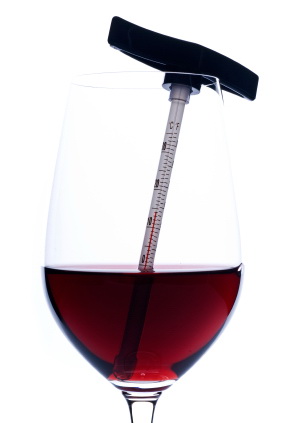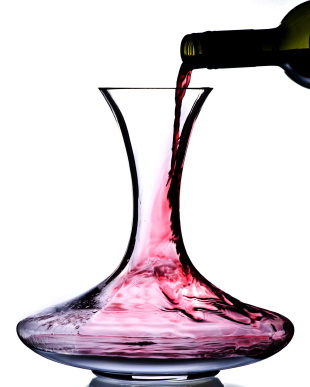 Continued from How to Host a Wine Tasting
Continued from How to Host a Wine Tasting
Here’s a checklist for how to host a wine tasting or start a regular wine tasting club.
1. One Month Before the Tasting
Decide who you want to invite
Your tasting club could be for your existing friends, or a means to get to know new friends via work or other venues, or a mix.
Invite six to twelve guests. These days, trying to find an unscheduled evening with six to twelve busy people is a challenge so you may need to give your group even more lead time than a month.
No need to get fussy with the invitations unless you want to or there’s a theme you’re trying to evoke. Otherwise, keep it simple and invite friends by e-mail or phone.
Set the date
Tastings can be held on weeknights though many people feel more relaxed about tasting (and drinking) wine on a Friday or Saturday evening when they’d normally socialize.
Set the time
If you’re just tasting wine with a few nibbles, you can start later, say between 7 p.m.  and 9 p.m., than if it’s a multi-course dinner party, which is best started around 7 p.m.
and 9 p.m., than if it’s a multi-course dinner party, which is best started around 7 p.m.
Wine tastings take about two to three hours, though of course, you can chat afterwards over coffee and tea; dinner parties are usually at least three to four hours.
Choose your theme
Select a theme from this book or one of your own. You can even choose to make the tasting more loosely structured and simply taste a sampling of everyone’s favorite wines.
You can also combine a wine tasting with a book club. In fact many book clubs are really just an excuse to get together for wine tasting.
You can choose wines featured in the book you’re reading, if any, or perhaps wins from the country where the book takes place.
I’ve included questions for book clubs who want to read my first book Red, White and Drunk All Over here.
2. One Week Before the Tasting
Remind the guests about the party.
Ask about food allergies and request food contributions if this will be a potluck gathering.
Whether it’s a multi-course meal or just nibbles, choose dishes that aren’t too spicy or hot and therefore can numb your palate and overwhelm the wine.
Suggested nibbles include cheeses, nuts, salmon and pate. Entrees include chicken in a cream or tomato-based sauce, pork, steak and pasta. Seafood can clash with red wines.
Rent the glassware if necessary.
Count on one glass per wine per person, unless you plan to reuse the glasses for two wines.
3. The Day of the Tasting
Prepare the table.
Use a white tablecloth (one from which you can wash out red wine stains) or pieces of white paper at each setting (guests can write on these).
Set the glassware in a row or semi-circle in front of each place, along with a water glass and spittoon. Use paper napkins if you’re just having nibbles, cloth if it’s a full meal.
You may want to put out notepads and pens for guests to jot down tasting notes or the names of their favorite wines.
4. Two Hours before the Tasting
Decant and/or chill any wines that require this. Proper temperature is important too.
 Serve sparkling, white and sweet wines at between eight and 10 degrees Celsius, and reds and fortified wines at 18 to 20 degrees.
Serve sparkling, white and sweet wines at between eight and 10 degrees Celsius, and reds and fortified wines at 18 to 20 degrees.
Set out nibbles that can act as palate cleansers: neutral crackers and bread.
5. Beginning of the Tasting
Pour the water at each place about ten minutes before everyone arrives as you’ll be busy pouring the wines once they’re seated.
Greet guests with a glass of champagne to kick off the evening if you like, but judge accordingly whether this will be too much alcohol when combined with the tasting.
Bag and number the wines if you are doing a blind tasting. Once guests are seated, pour the wines, from left to right: the first wine in the glass farthest to the left and so on. Enlist the help of several guests to do this.
6. During the Tasting
If you’re sampling more than one style of wine, start with dry sparkling wines, then move on to whites, rosés, reds and finally sweet and fortified wines.
Taste younger, simpler wines before older and more complex ones—but if the mature wines are fragile (likely to oxidize quickly once opened), reverse the order. The idea is to progress from light-bodied to medium- and full-bodied wines.
If you’re combining the tasting with a full-course meal, serve the first course.
Taste the first wine, following the steps in the chapter. Allow everyone a chance to taste the wine on their own and if they like, make notes.
When everyone seems ready, you can start the informal group discussion using your own questions.
Good questions to ask at the beginning include: Who likes this wine? Who doesn’t? Why or why not?
Does anyone get any particular aromas from it? Which ones? Does it bring back any memories for anyone? Any suggestions for food matches?
Encourage guests to help themselves to the palate cleansers, nibbles or first course and water.
Continue with each wine. For dinner parties, taste the first four wines with the first course, then the second four with the entrée.
At the end of the session, guests can vote on their favorite wine. If you’ve tasted the wines blindly, they can also guess which was which wine and then the bottles can be revealed.
session, guests can vote on their favorite wine. If you’ve tasted the wines blindly, they can also guess which was which wine and then the bottles can be revealed.
Retire to the living room for post-tasting conversation, coffee, tea and dessert.
Ask guests for their feedback in terms of what they liked and didn’t like about the tasting.
Discuss whether you would like to have another get-together, what the theme might be and when you’d like to hold it.
How often you meet depends on how enthusiastic and busy your group is.
Once a month seems to work for most people, with the tasting moving from home to home so that the burden of preparation doesn’t always fall on the same person.
If money isn’t a concern, another option is to outsource the gathering by renting a private room at a local restaurant—many have lovely rooms in their cellars for just these types of events.







